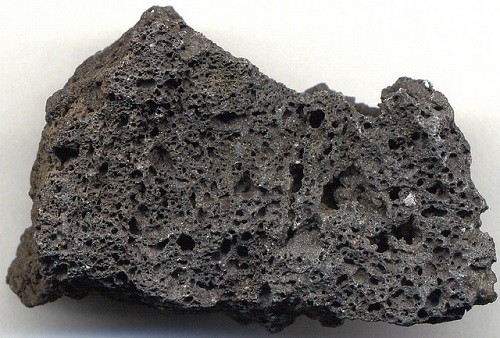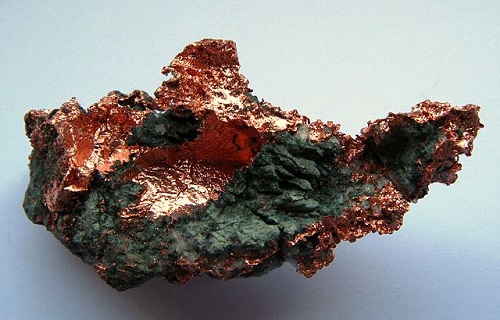Difference Between Rocks and Minerals

Igneous Rocks
Difference between rocks and minerals is more than just their appearance. It comes down to the way that they have been made over time, as well as the composition of their unique make-up. Perhaps a better idea would be to say that the commercial value of minerals is rather large, and rocks are mined to extract these minerals. Rocks play the proverbial gatekeepers to the mineral treasures that they hold inside. Let’s breakdown some of the fundamental difference between rocks and minerals so that you can have a better understanding of the uniqueness of these two marvels of nature.
What is a ROCK?
Rocks are everywhere. They are in your garden, on display as mountains, or even something that you have used to sit on before. Rocks tell the age-old story of the earth like pages in a book, historical information from a time long past. They have taught us about the dinosaurs, trilobites and countless other lifeforms that have existed on this earth before us. Constantly being subjected to heat, pressure and weathering, the rocks of the earth have been re-melted and re-shaped time and time again.
Classification of Rocks
Rocks are classified according to how they have been formed. These include three groups of rocks:
Igneous Rocks
Under the thin crust of the earth lies what is known as the fiery hot Mantle. The Mantle is the white hot molten liquid from which all igneous rocks are born. Some of the major elements present in igneous rocks include: silica, iron, sodium, potassium, aluminium, magnesium, as well as gasses which include: vapour, oxygen, carbon dioxide, nitrogen, hydrogen and sulphur dioxide.
- Formation: Igneous rocks are formed from molten magma that has cooled and crystallized. When this process occurs above the ground, i.e. during a volcanic eruption, is called extrusive. Molten magma is also known to crystalize under the surface of the earth, lying in the earths’ crust and cooling before reaching the surface. This is classified as intrusive as appose to extrusive.
- Cooling: Magma reaching the earth’s surface has a tendency to cool rather quickly compared to the underground (intrusive) cooling process, taking thousands or even millions of years to complete. The cooling rate of this magma will determine the kinds of rocks that are formed, faster cooling surfaces creating a rock that is fine-grained or aphanitic. Slower cooling that takes place underground allows for the formation of large crystals, Granite being the perfect example of this crystal forming cooling process.
Sedimentary Rocks
Sedimentary rocks fall into three main groups, each group forming in their own unique way through completely differing processes.
- Clastic Rocks
All Clastic rocks are formed from broken bits and pieces of existing rocks, settling out of the water or air. The broken bits and pieces of other rocks is called sediment and are the foundation for the formation of these kinds of rocks. This sediment is caused by weathering.
Weathering: any force that breaks rocks into smaller pieces – wind, rain, movement or freezing.
Erosion: the combination of weathering and movement of the sediment.
- Deposition – the wind and water carrying these pieces of rock fragments and allowing them to eventually settle, the heavier pieces settling first. This process of settling out is called deposition.
Lithification: the changing of sediment into rock through the processes of compaction and cementation.
- Compaction – after the sediment has been deposited, its own weight squeezes the particles together. The particles become so tightly squeezed together that waterborne sediment has most of the water pushed out of it.
- Cementation: the dissolved minerals fill the spaces between the sediment particles and act as a glue to cement the sediment together.
- Chemical Sedimentary Rocks
Chemical Sedimentary Rocks, although formed from sediments, are not formed the same way as Clastic rocks. Instead they are formed from chemicals (elements) that have been dissolved in water and have classed under three types:
- Evaporates
Are formed when a body of water has been evaporated and leaves behind deposits of one or more chemicals. Salt pans are a great example: as water evaporates they cannot hold the same amount of salt and begin to create salt deposits.
- Carbonates
Are formed through a chemical and biological processes and are made up of two primary minerals: Calcite and Dolomite
- Siliceous Rocks
Are dominated by Silica-secreting organisms such as diatoms and radiolarians.
- Organic Sedimentary Rocks
Organic Sedimentary Rocks are composed out of organic matter usually in the form of plant matter and are usually thought of as coal.
- Lignite – black with a crumbly consistency
- Bituminous Coal – dull to shiny and black
Metamorphic Rocks
Metamorphic Rocks are those that have been changed by heat and pressure over a period of time, and can be any kind of rock. There are three kinds of metamorphisms:
- Contact metamorphism: occurs when magma forces its way into existing rock and bakes the surrounding rocks, causing them to change. Marble from Limestone is an example of this process.
- Regional metamorphism: takes place over large areas and is a high-grade metamorphism. Regional metamorphism is usually associated with mountain building efforts of mother earth.
- Dynamic metamorphism: is produced in zones of extreme pressure, such as fault lines. Rocks scraping against each other are ground to a powder and then reformed under immense pressure with a low heat.

Native Copper (mineral)
What is a MINERAL?
As per its definition, a mineral is a naturally occurring inorganic solid. It has a definitive chemical composition and an orderly atomic structure. These are the basics that define what a mineral is, and now we are going to further breakdown some of the defining characteristics.
- naturally occurring – not made by man
- inorganic – has never been alive and is not made up of plant or animal matter
- solid – neither a liquid or a gas
- definitive chemical composition – each mineral is made up of a particular mix of chemical elements
- ordered atomic structure – each chemical element in a mineral is arranged in a particular way, hence the reason for minerals ‘growing’ as crystals
Physical Properties of Minerals
Of the 4,000 different minerals in the world it is interesting to note that each o fthem has their own unique set of physical properties that make them what they are. These properties include:
- color
- streak
- hardness
- luster
- diaphaneity (transparency)
- specific gravity
- fracture
- magnetism
- solubility
to mention a few. These physical properties are used to determine both the identify and potential industrial use. Let’s take a look at a few examples of specific minerals and their unique physical characteristics:
Talc – ground into a powder can be used as a foot powder. It has the ability to absorb moisture, oils and odors.
Halite – when crushed into small grains can be used to flavor food. It has a salty taste and dissolves completely, easily and quickly and will not damage your teeth.
Gold – is the ideal mineral suited to making jewelry. It can be shaped easily and carries a pleasing yellow color. It also boasts a bright luster that never tarnishes and is preferred by most people rather than other lighter metals.
From the examples above it is clear to see that each mineral has its own set of individual characteristics that make them unique and stand-alone, and able to perform specific functions within the realm of many industries.
Determining Factors of a Minerals Physical Properties
The primary characteristics that ultimately determine the physical properties of a mineral are determined at a molecular level through its composition, and the strength of the bonds in its ordered internal structure. This is best explained through a few comparative examples.
- Galena is a lead sulfide and has a much higher specific gravity than the aluminum hydroxide, bauxite. The difference here is because of the composition of the two minerals, lead being heavier than aluminum.
- Both diamonds and graphite, one of the hardest and softest natural minerals respectively, both consist of pure carbon. Their difference in strength comes from the bonds that they share with their other carbon atoms. In a diamond, each carbon atom has four strong covalent bonds with the other. Graphite on the other hand, boasts a sheet structure, and although it shares a strong covalent bond with the other carbon atoms, its sheet structure is bound by weak electrical bonds. These are easily broken when handled improperly.
- Ruby’s and gemstones are both color variations of the mineral known as corundum. The color differences are caused solely by the composition of the minerals trace elements. Corundum showing trace amounts of chromium exhibit the red color of the ruby, while trace amounts of iron or titanium reveal the blue coloring of the sapphire.
Main Differences
| Rocks | Minerals |
| A combination of more than one mineral formation | A solid formation |
| Composed of several minerals and is classed according to its process of formation | Unique chemical composition and is defined by crystalline structure and shape |
| Mined to harvest minerals | Have an immense commercial value |
| May contain organic matter | Are completely inorganic |
As you can see, there are vast differences between a rock and a mineral. Although they both come from the same place, each is made up in their own unique way and obtains its properties and characteristics from that. Relying on each other for their existence, yet worlds apart.
- Difference between Hyaline Cartilage and Elastic Cartilage - July 19, 2017
- Difference Between Rocks and Minerals - July 18, 2017
- Difference between Border Collie and Australian Shepherd - June 30, 2017
Search DifferenceBetween.net :
Leave a Response
References :
[0]http://www.rocksandminerals4u.com/what_is_a_rock.html
[1]http://www.physicalgeography.net/fundamentals/10d.html
[2]http://geology.com/minerals/what-is-a-mineral.shtml
[3]https://www.flickr.com/photos/jsjgeology/16758993751
